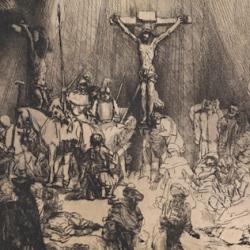Since Harnack, theologians have glibly spoken of Anselm’s Cur Deus Homo as a form of “atonement theory” or a “model” of atonement. According to Katherine Sonderegger, Harnack told the story of atonement theology in terms of a set of “competing ‘models,’ each with schools and eponymous heads”: “Harnack’s nineteenth-century magisterial history, The History of Dogma, set the tone and gave the language for the modern opposition to Anselm’s doctrine: it was an ‘objective model of the atonement,’ he said, set over against the ‘subjective model’ offered by the twelfth-century scholastic and sometime monastic, Abelard, and provided the framework for the Protestant scholastic doctrine of ‘penal substitutionary atonement’” (342).
Treating Anselm as an “icon” of a school of atonement, though “stylized . . . flattened and distorted” his treatise. Not only does Anselm offer more than a “model”; the treatise is about more than “atonement,” and its reasoning cannot be captured in Harnack’s binaries of objective/subjective or logical/narrative. Sonderegger writes, “Cur Deus Homo examines the rational structure of the whole course of God’s providential and redeeming work, showing how the scriptural record is intellectually sound, necessary and fitting, and God’s character merciful, gracious and wise” (343).
Adam Johnson (Atonement: A Guide for the Perplexed) offers a complementary analysis. He observes the “rich and varied account of the work of Christ” that were developed by theologians from Irenaeus to Edwards, and argues that since the Enlightenment “Christ’s work tended to be treated one-dimensionally” as “talk of ‘theories’ of atonement became commonplace” (36).
Framing can distort the picture within the frame, and perhaps our grasp of the work of Christ is twisted both by the category of “theory” and by the very category of “atonement.”
(Sonderegger, “Anselm, Defensor Fidei,” IJST 9:3 [2007]: 342-59.)















